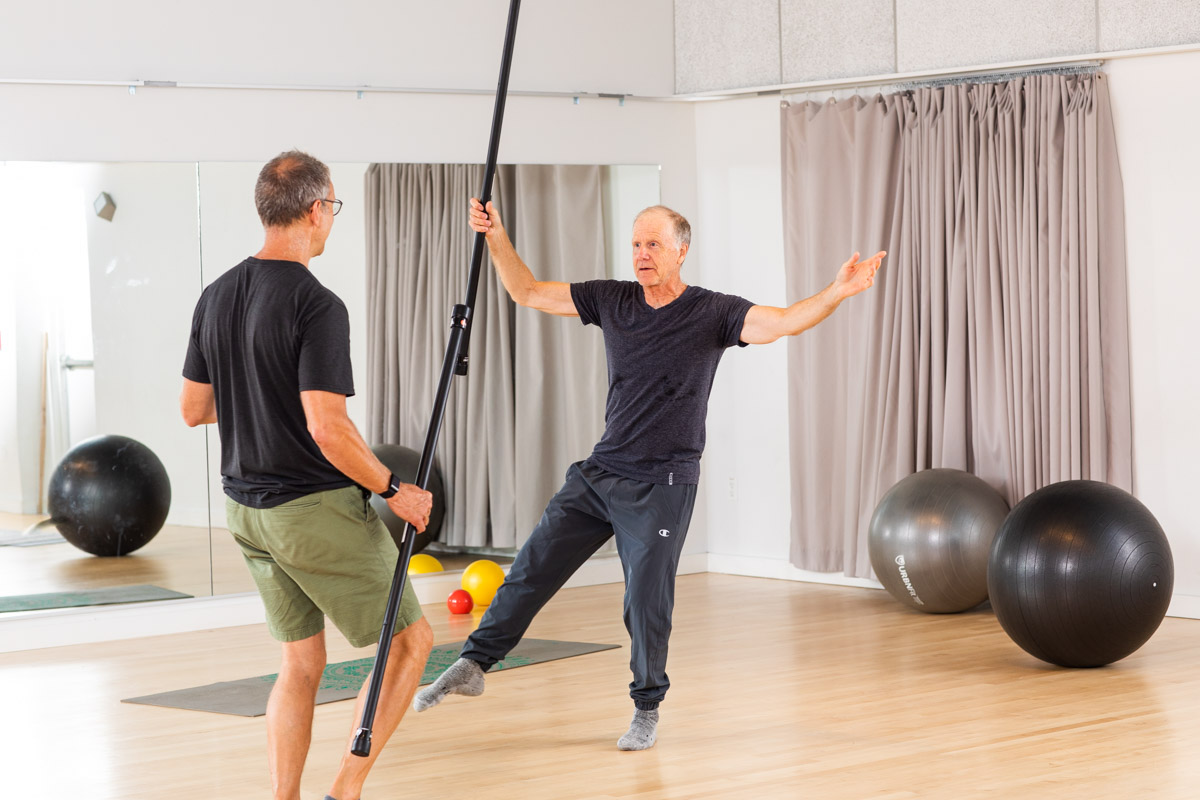Balance Training
We all know that maintaining good balance is important for fall prevention, but it’s so much more than that. My goal is to teach you the basic principles of balance training so that you can do your own training at home on your own, as part of your daily routine.





A well-functioning balance system not only safeguards against injury, but also supports brain health and neuromuscular awareness.
Balance is key to performance in almost every sport and physical activity, from pickleball to tennis, kayaking to hiking, biking, and skiing.
This training could be right for you if:
You’re noticing that your balance seems to be off, or you feel less sure-footed as you engage in sports or other activities of daily living.
You’ve had an injury that has affected your balance, and you want to get back to 100%.
You are a competitive athlete and want to improve your game.
You’ve suffered a fall, or near-fall experience and are nervous about it happening again, which in turn is constraining your freedom of movement.
I take a dynamic approach to balance training.
Standing on one foot is great, but what’s equally important is training one’s ability to regain balance, to be able to respond quickly and confidently to sudden changes in the environment, or to a temporary loss of balance.
The Trainings
The training begins with an assessment of the client’s current balance ability. We then begin to challenge and strengthen the neuromuscular and sensory systems with progressive exercises and balance games, building confidence with each session.
How I Work
To be effective, balance training should be done on a regular basis. However, it’s not complicated and you don’t need a lot of equipment. My goal is to teach you the basic principles of balance training so that you can do your own training at home on your own, as part of your daily routine, these includes an initial assessment, the development of an array of exercises adapted to your balance level, progressions of those exercises, practice in adapting the exercises to your home environment, and a final assessment.

What Clients Say
Training Options:
Sessions are 50-55 minutes in length, and take place in person at my home studio.
Questions?
If you have any questions about the training please reach out and I will be happy to answer.
Can balance training help with peripheral neuropathy?
Unfortunately, balance training alone probably won’t solve the numbness or tingling sensation in your extremities. However, because of that, it’s all the more important to train all the other components of your body’s balance system, giving yourself the best chance of being able to recover your balance if you get knocked off.
I keep injuring my ankle. Can balance training help?
For sure. You probably know this already, but ankle injuries tend to beget more ankle injuries. That’s because a sprain to the ligaments and tendons that support the ankle knocks the proprioceptive awareness in those soft tissues offline. In essence, you’ve got a blind spot in your ankle’s ability to respond to sudden impacts or changes. Balance training will restore that awareness.
How often would you recommend doing balance training?
Honestly, every day. Balance training can be done anywhere, and you don’t need a lot of fancy equipment. You could think of 5 to 10 minutes balance training in the morning as a cup of coffee. It gets your vestibular system, visual-motor system, nervous system, muscles and joints all working and humming along together.
Will balance training really improve my tennis or pickle ball game?
No question. The power of your stroke is anchored by and comes from a stable core, which in turn derives its stability from the coordinated action of the muscles of the pelvis down through the feet. Balance training will improve your confidence in making difficult shots, and keep you safe when you’re moving quickly to reach the ball.



%402x.svg)
%402x%20(2).svg)